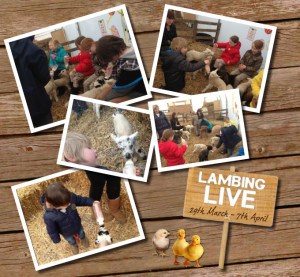A research paper written by a Kansas State University College of Veterinary Medicine doctoral student in pathobiology and Doctor of Veterinary Medicine graduate has earned the 2015 Mark Gearhart Memorial Graduate Student Award from the Association for Veterinary Epidemiology and Preventive Medicine.
 Charley Cull, Oakland, Nebraska, earned the honor for his paper “Performance and carcass characteristics of commercial feedlot cattle from a study of vaccine and direct-fed microbial effects on Escherichia coli O157:H7 fecal shedding.” The award, which includes a plaque and $500, was presented at the Conference of Research Workers in Animal Diseases annual meeting in Chicago on Dec. 8. Cull was a featured speaker at the meeting and received an additional $500 to offset travel expenses.
Charley Cull, Oakland, Nebraska, earned the honor for his paper “Performance and carcass characteristics of commercial feedlot cattle from a study of vaccine and direct-fed microbial effects on Escherichia coli O157:H7 fecal shedding.” The award, which includes a plaque and $500, was presented at the Conference of Research Workers in Animal Diseases annual meeting in Chicago on Dec. 8. Cull was a featured speaker at the meeting and received an additional $500 to offset travel expenses.
The Mark Gearhart Memorial Graduate Student Award is an annual competition that recognizes graduate students who are completing, or have just completed, advanced academic or professional training in veterinary epidemiology, public health or preventive medicine. The competition is based on the student’s research that has resulted in a scientific manuscript for which the student is the primary author.
“I am truly honored to be recognized for this year’s Mark Gearhart Award,” Cull said. “I believe that the combination of hard work and outstanding mentoring has made this research and award possible.”
Cull, who completed a Doctor of Veterinary Medicine at Kansas State University in 2014 and is now working on the pathobiology doctorate, attended the meeting with his major professor, David Renter, professor of epidemiology in the College of Veterinary Medicine’s diagnostic medicine and pathobiology department.
“This is arguably the highest award for a graduate student in Charley’s field, so we are extremely proud that he was chosen for this honor,” Renter said.
Cull’s graduate education at Kansas State University has been supported in part by a special Coordinated Agricultural Project grant program through the U.S. Department of Agriculture’s National Institute of Food and Agriculture. This grant is titled “Shiga-toxigenic Escherichia coli in the Beef Chain: Assessing and Mitigating the Risk by Translational Science, Education and Outreach” and is administered by a group of faculty who are beef food safety experts at Kansas State University; the University of Nebraska; Lincoln, Virginia Tech; and the USDA Agriculture Research Service Eastern Regional Research Center. The grant program seeks to significantly advance evidence- and action-based beef food safety knowledge to protect public health.













